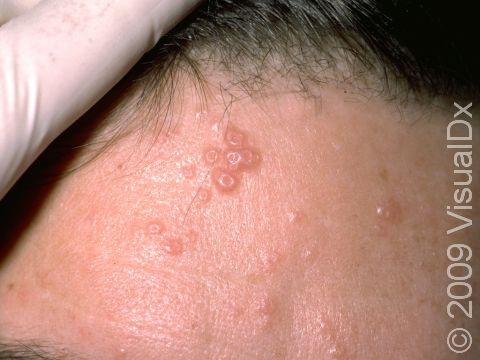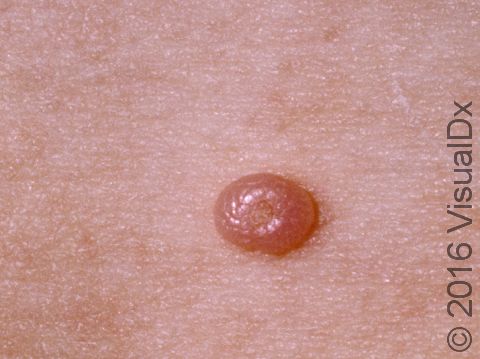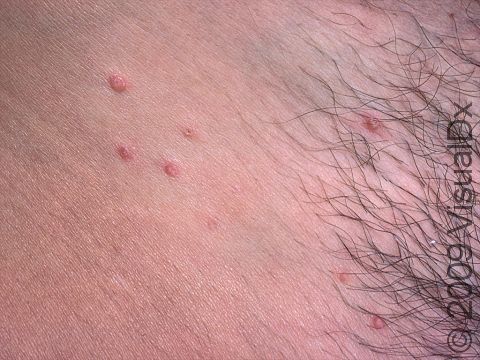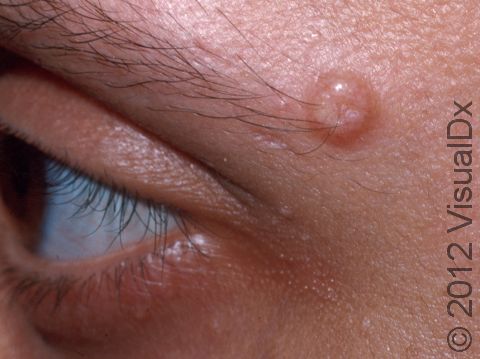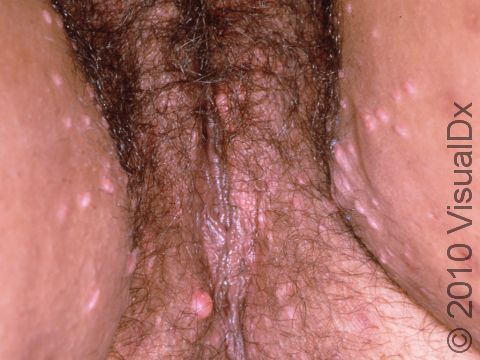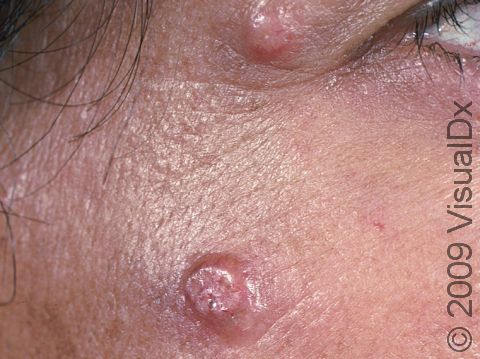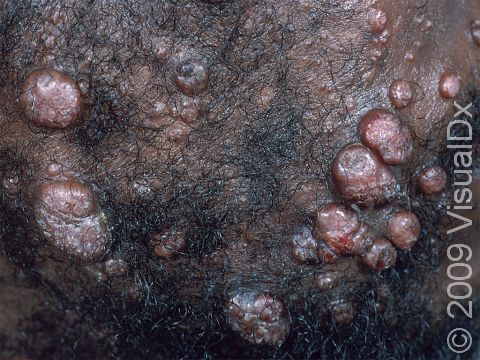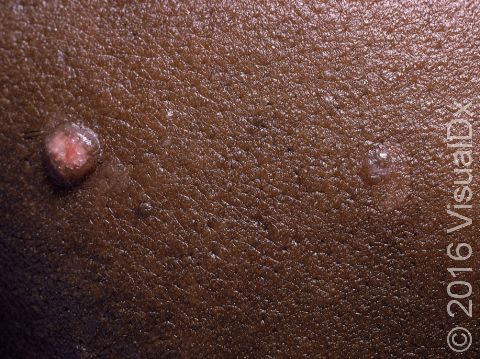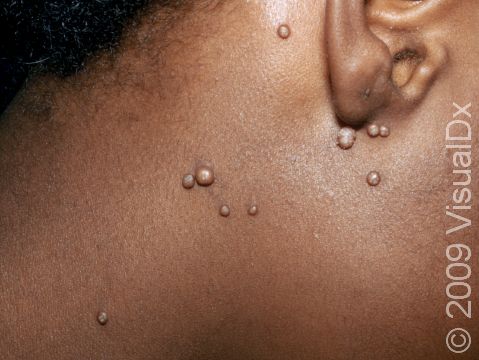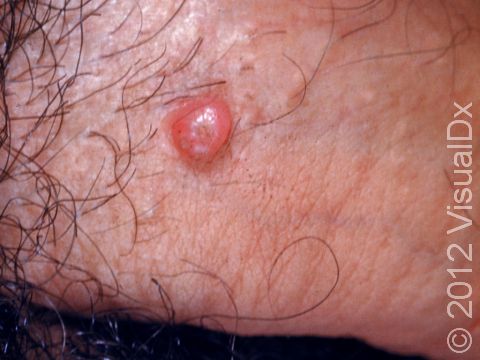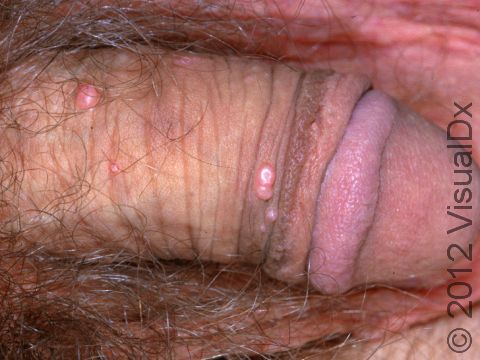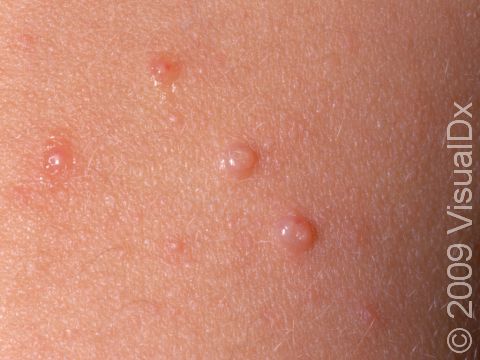Molluscum Contagiosum
Molluscum contagiosum is a common viral infection of the skin. Although it typically goes away after several months, some cases can last a few years. Molluscum can spread to surrounding skin by scratching or rubbing (self-inoculation), and it can be spread to others by skin-to-skin contact or handling contaminated objects such as towels, clothing, and gym equipment. Poor hygiene and warm, moist climates encourage the spread of molluscum. Use of public or school swimming pools is also associated with infections.
Who's At Risk?
Adults and teens are often infected by molluscum through sexual contact and tend to have genital lesions. Children ages 2-5 years are most commonly infected by close nonsexual contact, and lesions appear on the face, neck, arms, underarms, and hands (but usually not the palms). Individuals with eczema (atopic dermatitis) or a compromised immune system may be more susceptible to molluscum infection.
Signs & Symptoms
In adults, the genitals, stomach, buttocks, and inner thigh areas are more often affected, as intimate contact with someone infected is the typical source of infection. Men are more often affected than women. Adults with a compromised immune system (such as those with HIV) may have severe, extensive infection.
One or more small (1-6 mm) pink, white, or skin-colored, smooth papules (firm bumps), often with a tiny dot or depression in the center, occur in clusters and sometimes in a straight line from scratching (self-inoculation). In darker skin colors, the molluscum contagiosum lesions may appear skin-colored or purplish. In patients with an immune system deficiency, bumps can be larger than a thumbnail.
The infection can be considered:
- Mild – fewer than 10 lesions.
- Moderate – 10-50 lesions.
- Severe – more than 50 lesions.
Self-Care Guidelines
Treatment of mild molluscum infection is often not required, as these infections go away on their own. Care should be taken not to scratch or shave the affected areas to help avoid spreading them to other parts of the body. Keep the affected areas covered to avoid transmission of the virus to other people, and avoid sharing clothing, towels, and bedding with others.
Treatments
- Removal with freezing (cryosurgery), scraping (curettage), or burning (electrocautery)
- Application of medications in office that cause a blistering reaction
- Topical berdazimer gel
- Prescription of a cream with either tretinoin (Retin-A) or imiquimod (Aldara, Zyclara), a prescription product also used to treat warts
Visit Urgency
In the case of moderate and severe infection, when there is a concern of spread or concern about appearance, seek medical care. Consult a health professional if there is any new skin growth that you do not recognize.
Trusted Links
References
Bolognia J, Schaffer JV, Cerroni L. Dermatology. 4th ed. Philadelphia, PA: Elsevier; 2018.
James WD, Elston D, Treat JR, Rosenbach MA. Andrew’s Diseases of the Skin. 13th ed. Philadelphia, PA: Elsevier; 2019.
Kang S, Amagai M, Bruckner AL, et al. Fitzpatrick’s Dermatology. 9th ed. New York, NY: McGraw-Hill Education; 2019.
Last modified on June 13th, 2024 at 1:57 pm
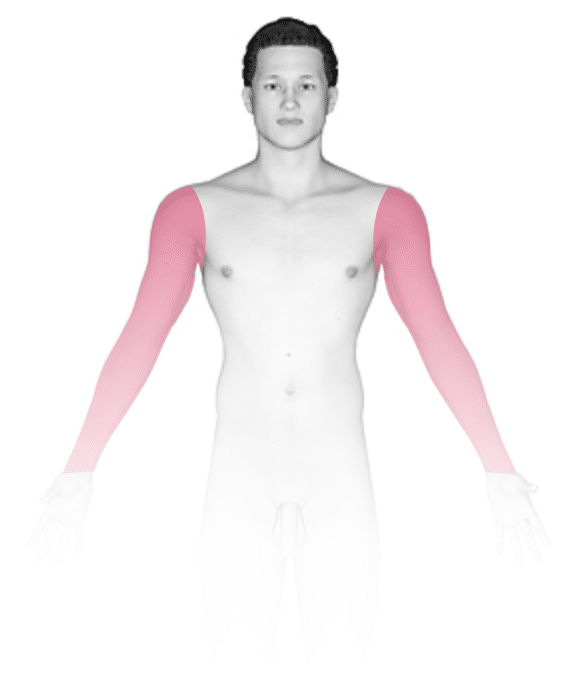
Not sure what to look for?
Try our new Rash and Skin Condition Finder
